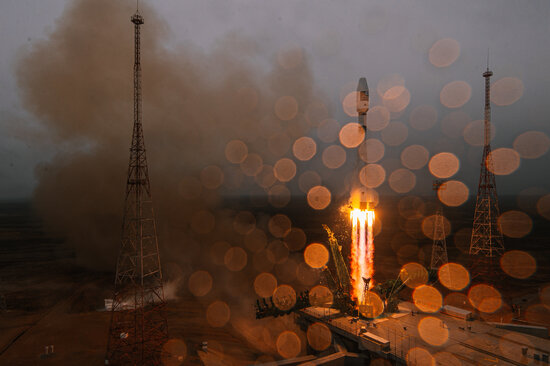High hopes for Catalonia’s nanosatellites
Launching of 'Enxaneta' and creation of the Catalan Space Agency hope to boost local economy

If you ask a Catalan person what the meaning of the word ‘enxaneta’ is, they will probably say human towers and daredevil children who climb on top of them, raising their hands to the sky to signal the ‘castell’ (castle) has been crowned.
Although, some might now tell you that ‘Enxaneta’ is the first nanosatellite put in orbit by the Catalan government.
It was launched on Monday, March 22 —at 7:07 am, to be precise—from the Baikonur Cosmodrome in Kazakhstan. The initial takeoff, originally scheduled for Saturday, was delayed due to technical issues.
The name ‘Enxaneta’ being the winner after a competition involving 10,000 children, it is the first of six nanosatellites that the government will launch in the coming years as part of its New Space strategy, which officials claim will help raise millions of euros and put Catalonia on the map with a new booming industry.
The word 'nanosatellite' is pretty appropriate: it weighs less than two kilograms and it’s core, where most of the electronic parts are located, is a cube hardly bigger than a tea cup. The entire structure is about half the size of a shoe box.
Costing €574,750, it was designed and built by the Catalan company Sateliot. Its main goal is to improve the Internet of Things (IoT) connectivity and collect data from about a hundred sensors spread across Catalonia, monitoring river water levels, contamination, and wildlife.
The Montsec observatory
The nanosatellites launched by the Catalan government will be monitored from the Montsec Astronomical Observatory, located at 1,570 meters up on top of a mountain range in Western Catalonia. Looking South, one can see the vast plain of Lleida, and looking North one gets a breathtaking view of the Pyrenees.
"The weather is better than in other parts of Europe, the light pollution is much better, so for astronomy it's a pretty good place," said the observatory’s director, Josep Colomé. "For satellite communications it’s also a good place because of the horizon, which is very open, but also very clean"
The observatory’s ground station is already tracking other nanosatellites, like those put into orbit last September by the Polytechnic University of Catalonia.
Colomé expects to add a new ground station in the near future. "It will also be used in collaboration with other ground stations around the world and other missions promoted by different countries," he said.
As of January 1, 2021, there have been 1,474 nanosatellites launched into space, and more than 2,500 will be put in orbit in the coming six years, according to nanosats.eu.
While large satellites weigh more than 1,000 kg, nanosatellites range from one to ten kilograms. Picosatellites are even smaller, weighing just 100 grams.
A Catalan Space Agency, but not like NASA
Nanosatellites are the poster children of the new space program adopted by the Catalan government, which will also lead to the creation of the Catalan Space Agency after the new administration has greenlighted the project.
Faced with criticism and even mockery surrounding the name of the project, Catalonia’s minister for digital policies has clarified that its ambition is completely different to that of other major space agencies.
"It’s obvious that it's not a ‘Catalan NASA’. Our aim is not to bring astronauts to other planets or explore outer space. This agency has an industrial purpose, which is creating jobs and connecting Catalonia from space," said Puigneró.